The RNZAF has test fired the Penguin Mk2 Mod 7 anti-ship missile (AShM) for the first time since it was first adopted a decade ago.
The Penguin was launched by a No. 6 Squadron RNZAF Seasprite Helicopter whilst it was on operations with HMNZS Te Kaha in the Arabian Gulf, on Feb. 18, 2025. HMNZS Te Kaha is one of New Zealand’s two Anzac-class frigates and is currently operating as a part of Combined Task Force 150. Their mission is to patrol the Arabian Gulf, preventing and responding to instances of piracy, drug and weapons smuggling, with the single onboard Seasprite providing continuous Intelligence, Surveillance and Reconnaissance (ISR) and force protection for the warship.
HMNZS Te Kaha snuck out of Devonport Naval Base today with AIS off.
6 month deployment to the Middle East, stay safe folks. https://t.co/rnPuDHnQNc pic.twitter.com/mN8c3Pe1N1
— AvScanNZ 🇳🇿 (@NZ_Trav) February 12, 2025
The Penguin was originally ordered by New Zealand’s government in 2013, from the Norwegian defence company Kongsberg, to replace the AGM-65 Maverick missile as the sole AShM for the Royal New Zealand Navy. Whilst traditionally an anti-tank missile, the Maverick was also capable of taking on warships and was used by both RNZAF Seasprite helicopters and A-4K Skyhawk jets in this role, before the end of fast jet operations in New Zealand service in 2001.
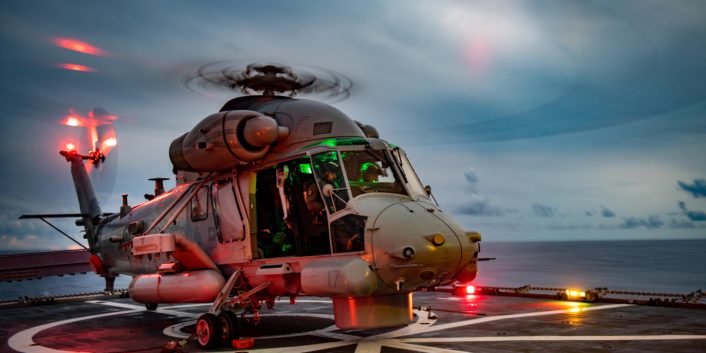
The program to test fire the Penguin had been met with delays following a necessitated re-motoring of the missile stocks due to their age, which had prevented a planned test launch in 2024. But a test launch was very important for the New Zealand Defence Force as the Penguin represents one of two offensive weapons used by the RNZN, the other being the Mark 46 torpedo.
Without the Seasprite and the Penguin, the Anzac frigates would not be able strike targets beyond the 11km range of the torpedo, putting the frigate at a serious disadvantage against seaborne threats.
Penguin
The Penguin missile was a joint development between Kongsberg and the Norwegian Defence Research Establishment to produce an AShM with an infrared (IR) seeker. It features a 120 kg or 130 kg delayed fuse warhead which will penetrate the hull of a warship before exploding within, causing the maximum amount of damage possible.
Additionally, the mark three variant, not used by New Zealand, can glide after initial launch, delaying the time until the rocket motor fires, giving the missile an extended range of around 55km, compared to the mark two’s 34 km range.
The missile program was heavily supported by the U.S. who supplied part of the funding before adopting the missile for use from its Seahawk helicopters in the anti-shipping role, where it was designated as the AGM-119.
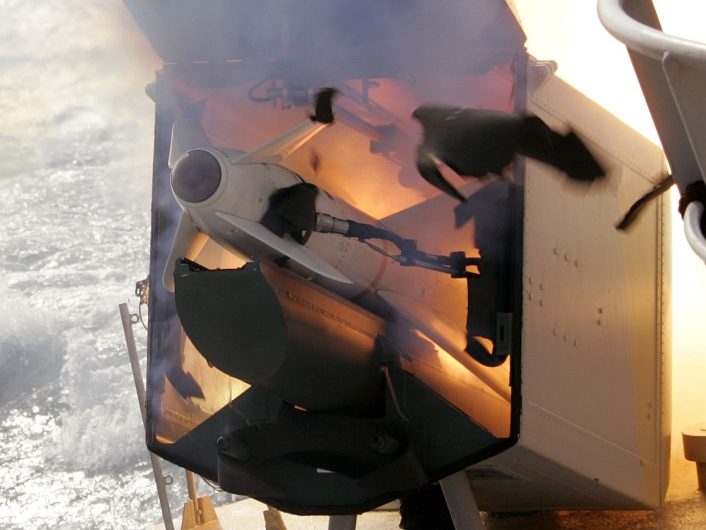
Originally, the missile was designed for ship-borne use being installed in a 500-kilogram (1,100 lb) deck-mounted box launcher with doors that would snap-open on its launch. These were designed to take up little space on the deck, allowing them to be retrofitted to existing vessels. The Snøgg-class and Storm-class patrol boats of the Norwegian Navy would be the first equipped with the missile, using them to defend the Norwegian fjords against possible Soviet landings during the Cold War.

It was soon decided that mounting the missile onto aircraft would allow for longer range interdiction of Soviet warships and so it was fitted onto the Norwegian Air Force F-104 Starfighter and, later, the F-16 Fighting Falcon. The Penguin could be launched from rails designed for the AGM-12 Bullpup air-to-ground missile, making integration onto these aircraft simpler.
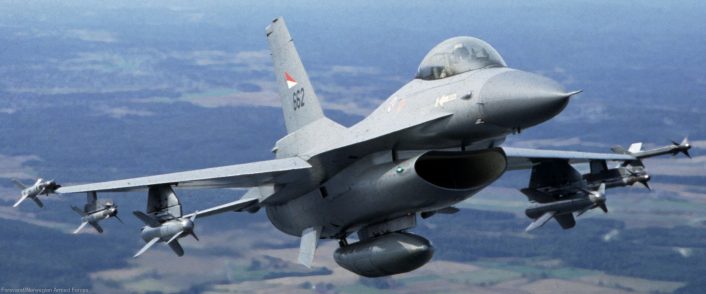
Recently the Penguin was retired by the Norwegian military in favor of the Naval Strike Missile (NSM), for surface warfare combatants, and the Joint Strike Missile (JSM) which is deployed from the internal weapons bay of the F-35 Lightning II. However, the Penguin is still in service with several air arms, including the Ukrainian Armed Forces which received the weapon in 2022 and might deploy it from the recently supplied Norwegian F-16 AM/BM aircraft.
For the foreseeable future, the RNZAF will stick with the Penguin missile, until the Super Seasprite is replaced and a new maritime strike missile is adopted for their use.
The New Zealand Defence Force has conducted its first launch of a Kongsberg Penguin anti-ship missile from the Kaman Aerospace SH-2G(I) Super Seasprite helicopter. pic.twitter.com/IJNzg3iyqJ
— International Defence Analysis (@Defence_IDA) February 18, 2025
The Super Seasprite
The Super Seasprite used by New Zealand has a long development lineage, stretching back into the 1950s with the first production UH-2A/B Seasprite helicopters developed by Kaman in the United States. It was designed to equip the lighter vessels of the United States Navy, such as the Knox class frigate, with a fast and compact helicopter for combat search and rescue (CSAR) and utility operations.
Here is the SH-2 Seasprite an unsung hero of the fleet as the plane guard, here is a view of flight operations aboard USS Kitty Hawk in the South China Sea off the coast of Vietnam circa 1967/1968. #sh2 Seasprite #cva63 #cv63 #usskittyhawk #flynavy #aviationsafari #boneyardsafari pic.twitter.com/rA71bee9Nw
— Boneyard Safari (@Boneyardsafari) May 2, 2023
The UH-2 would see service in this role during the Vietnam war, rescuing aircrew that had been shot down during operations over North Vietnam. For these pilots, it was better to eject or bail out over the South China Sea and await rescue from Seasprite and other CSAR helicopters, than it was to eject over North Vietnamese territory and be imprisoned in the Hanoi Hilton. Many lives were saved as a result of these aircraft and their crews.
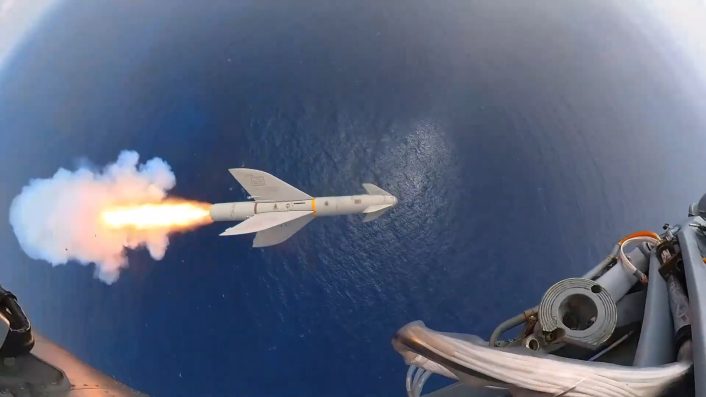
In 1970, the UH-2 would later be developed into the SH-2F helicopter under the Light Airborne Multi-Purpose System (LAMPS) program. This saw the upgrading of Seasprite helicopters with sonobuoy launchers and torpedo mounts, so that they could detect and take on hostile submarines independent of dedicated anti-submarine aircraft normally centered around a carrier strike group.
In this role, the Seasprite would be replaced by the SH-60 helicopter, which it would then also be fitted with AGM-119 Penguin missiles.
Two Royal New Zealand Navy SH-2G Super Seasprite. #worldhelicopterday pic.twitter.com/SCuVBuTEwM
— Old Brown Shoe Navy (@classicNavalAir) August 17, 2015
The SH-2F would later be upgraded with more powerful General Electric T700-GE-401 turboshaft engines, becoming the Super Seasprite SH-2G, which would serve alongside the UH-60 and SH-60 helicopters maintaining light ASW on board the U.S. Navy’s fleet of small frigates until their retirement in the late 1990s.

These helicopters would see foreign service across the world, with New Zealand first adopting four SH-2Fs from U.S. Navy surplus as an interim measure before five purpose-built SH-2G(NZ) Super Seasprites could be delivered in the early 2000s. By 2014, however, these helicopters were requiring a refit due to saltwater ,corrosion and it was decided that buying replacements would be a cheaper alternative for the New Zealand government.
Due to this, the RNZAF bought ten former Royal Australian Navy SH-2G(I) variants and inducted eight into service with No. 6 Squadron in 2015. The other two helicopters were used for spare parts to keep these aircraft in the air during their operational lifespans.
As time has gone by, these helicopters are starting to become outdated, with their original 1950s design no longer suitable for modern operations. A lack of spare parts due to the end of production in 1995 and the old design mean that the RNZAF is now looking for a replacement to sustain naval aviation into the future.
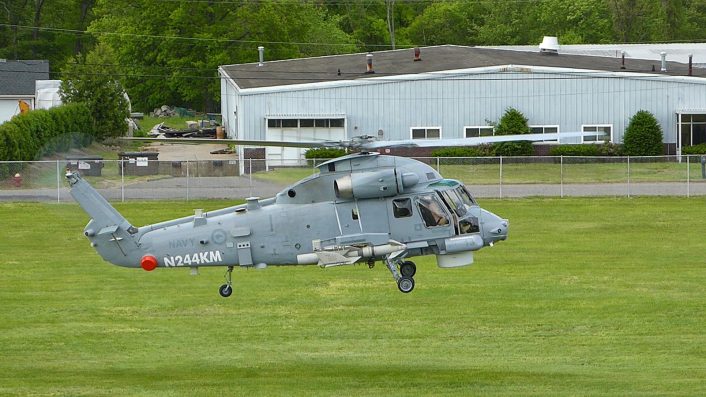
By 2027 it is expected that the RNZAF will have ordered the Seasprites’ replacement, with current contenders for the role being the NHI NH-90, Leonardo AW159 Wildcat and the Sikorsky MH-60R Seahawk. All of these helicopters would provide a modern and capable naval helicopter to the RNZAF and maintain the AShM capability for the current Anzac-class frigates and their future replacement.








